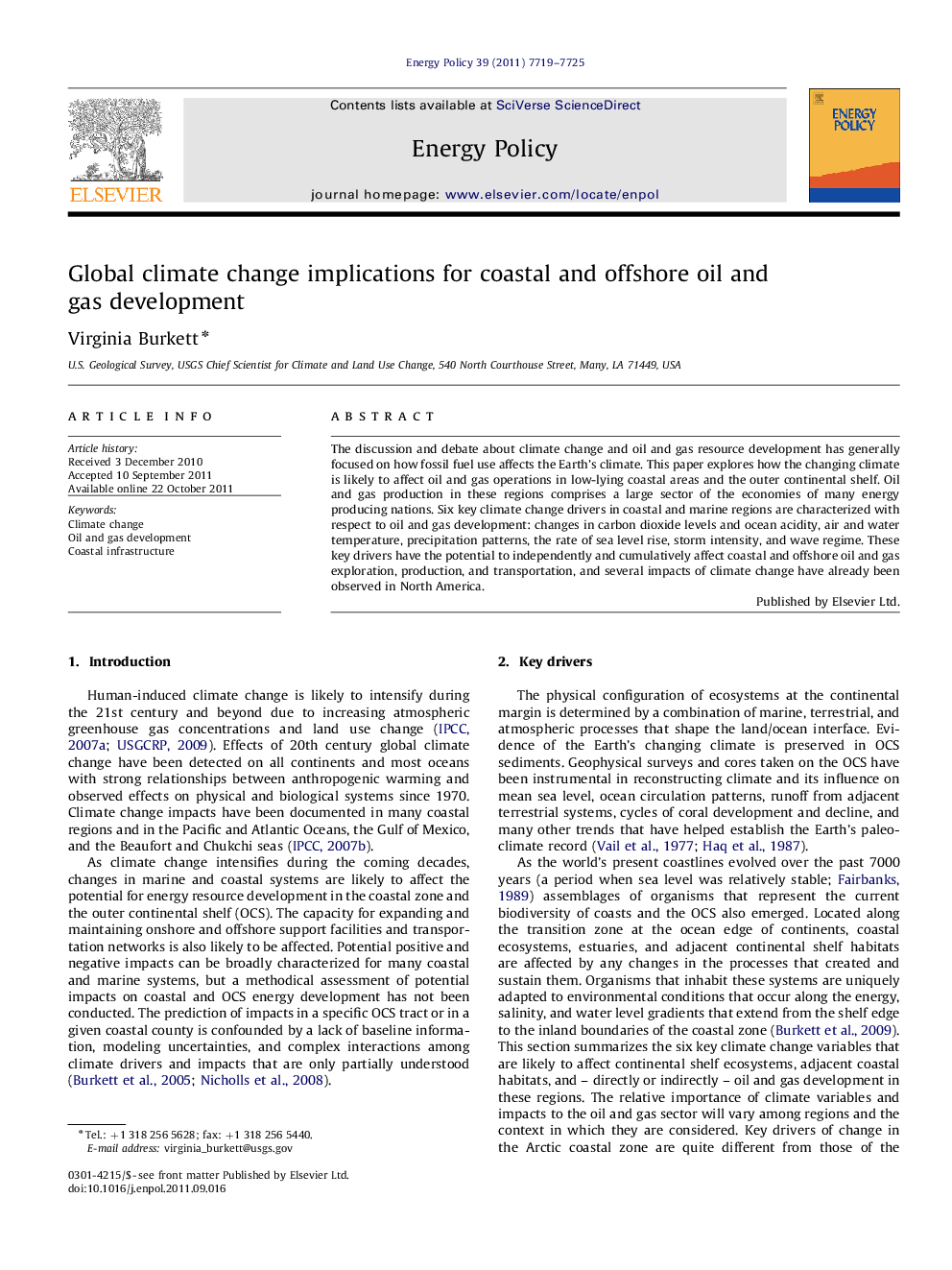| Article ID | Journal | Published Year | Pages | File Type |
|---|---|---|---|---|
| 993217 | Energy Policy | 2011 | 7 Pages |
The discussion and debate about climate change and oil and gas resource development has generally focused on how fossil fuel use affects the Earth's climate. This paper explores how the changing climate is likely to affect oil and gas operations in low-lying coastal areas and the outer continental shelf. Oil and gas production in these regions comprises a large sector of the economies of many energy producing nations. Six key climate change drivers in coastal and marine regions are characterized with respect to oil and gas development: changes in carbon dioxide levels and ocean acidity, air and water temperature, precipitation patterns, the rate of sea level rise, storm intensity, and wave regime. These key drivers have the potential to independently and cumulatively affect coastal and offshore oil and gas exploration, production, and transportation, and several impacts of climate change have already been observed in North America.
► Climate change effects on coastal and offshore energy development have been observed in some regions. ► Key drivers include changes in temperature, precipitation, sea level rise, storm intensity and wave regime. ► These can independently and cumulatively affect coastal and offshore exploration, production, and transportation. ► A methodical vulnerability and impact assessment is needed to support adaptation in this sector of the global economy.
